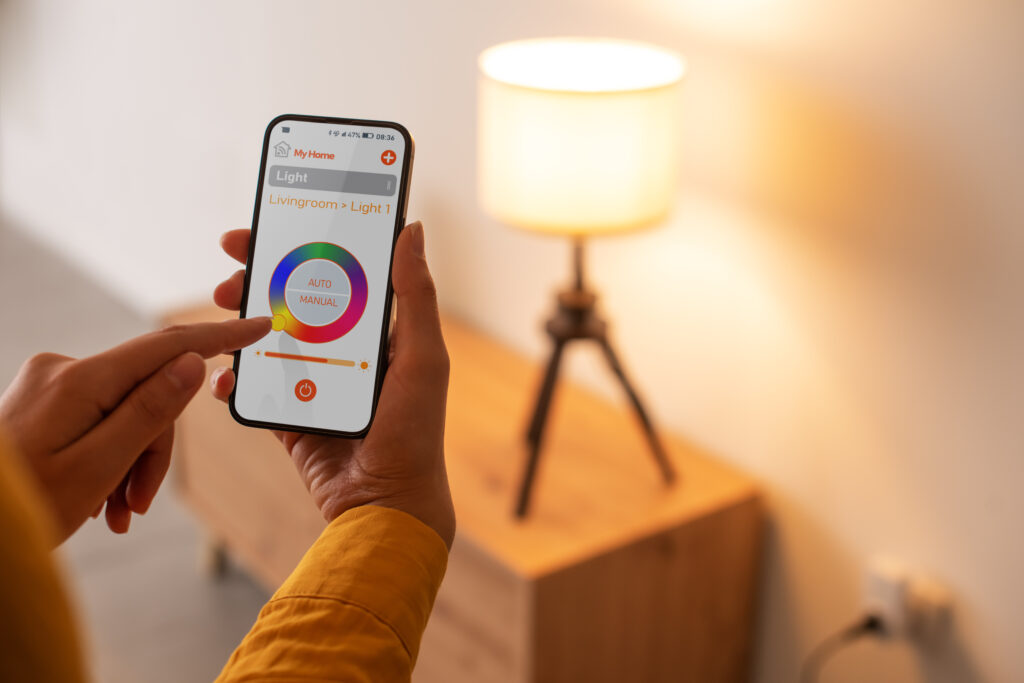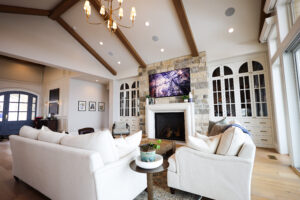Many people have heard of smart lights. However, not everyone knows exactly how these systems work. The technology behind these systems may seem complex, but in reality, it is quite simple and easy to understand. Understanding how different types of smart light systems work can help you decide which system is best for you and your home. In this guide, we will break down the basics of how smart lights work and provide you with a better understanding of these innovative lighting systems.
How Do Smart Lights Work?
Smart lights have become popular in recent years due to their convenience, energy efficiency, and ability to elevate the ambiance of a space. What sets smart lights apart from traditional lighting systems? The answer lies in their connectivity and automation capabilities. Smart lights are essentially LED or CFL bulbs that can connect to a wired or wireless network, allowing you to control them remotely using a smartphone, tablet, or central control hub.
Smart lights can be controlled remotely, scheduled to turn on or off at specific times, and even change colors or dim according to your preferences. The basic technology behind smart lights involves integrating them into a smart home system, allowing them to communicate with other devices and be controlled via apps, voice commands, or smart switches.
Smart lights operate through a central hub or controller that processes commands from your devices and transmits them to the lights. This system can work through various technologies, including Wi-Fi, Bluetooth, Z-Wave, or wired connections. Let’s take a closer look at the different options homeowners have and how they work.
Types of Smart Lights
Homeowners looking to get smart lighting generally have two main options: smart bulbs and smart switches.
Smart Bulbs: Smart bulbs are a type of consumer-grade smart light, typically LED bulbs, that integrate with virtual assistants like Alexa and Google Home. They offer modern features such as energy efficiency, human-centric colors, pre-set brightness schedules, and built-in dimming capabilities. Installation is simple; just screw the bulb into an existing light socket and connect it through a mobile application. While many smart bulbs have built-in dimmers, their performance can vary, with some bulbs being brighter than others. Despite their ease of use, outfitting an entire home with smart bulbs can be costly due to the need for multiple bulbs.
Smart Switches: Smart switches are like regular home switches but provide more control over regular lighting and smart bulbs. They offer features like voice commands, app control, and motion sensors. Installation typically requires a neutral wire and is best handled by an electrician, making them less ideal for DIY enthusiasts. Smart switches are often more cost-effective than smart bulbs because fewer switches are needed for complete lighting control.
Smart Light Systems: Wired and Wireless
One of the main decisions homeowners make when integrating smart lighting is whether to go with a wired or wireless system.
Wireless Systems: Wireless smart light systems can be an excellent option for retrofitting existing homes. These systems get rid of the need to run new wires to all of the switches, avoiding the hassle of cutting through drywall and patching it up. Most wireless systems work through Wi-Fi or Bluetooth connections. However, the problem with this is that homeowners cannot fully control their lighting when the Wi-Fi or Bluetooth connections are down. Additionally, wireless systems may be prone to interference from other devices and can have a limited range.
However, some wireless systems like Lutron Radio RA3 operate through a network of repeaters and processors that communicate using radio signals. The processor acts as the brain, while the repeaters relay information between the switches and the processor. Since these systems use radio signals, they can still function if the internet goes down.
Wired Systems: Wired smart light systems, such as Lutron Homeworks, offer more programming capabilities and reliable connections than their wireless counterparts. These systems require professional installation and are more expensive than wireless systems, but they offer more control over lighting design. Wired systems use dedicated wires to connect switches to a central processor, allowing for greater control and flexibility. Homeowners with wired systems can also integrate other home automation features, such as motorized blinds and thermostats. These systems do not rely on Wi-Fi or Bluetooth connections, so they are not affected by interference and have a longer range.
How Smart Lights Integrate into a Smart Home
If you are looking to create a smart home with integrated systems, we recommend a home automation platform such as NICE. This system integrates with Lutron, allowing you to control your lights through various devices, including touch panels and smartphone apps. The NICE system acts as a bridge, sending commands from your smart devices to the Lutron processor, which then directs the lights.
A whole-home system lets you control your lights and other home features from one centralized location. This also expands the possibilities for automation and customization. For example, you could have your lights automatically turn on when your security system is armed or set up a “goodnight” scene that turns off all the lights and locks the doors before you go to bed.
How are Smart Lights Installed?
Installing and maintaining smart lights can vary depending on whether you choose a DIY approach or a professional installation. While installing a smart light system yourself may seem appealing, hiring a professional will result in a more reliable and secure system. They can also assist you in creating a customized and optimized smart home experience.
DIY Installation: Many smart bulbs and some smart switches are designed for easy DIY installation, making them accessible to the average homeowner. Smart bulbs simply require screwing into an existing light socket and then connecting to your home network via a mobile app. The setup process typically involves pairing the bulb with your Wi-Fi network and configuring it through the app. Smart switches, while a bit more complex, can still be installed by a competent DIYer. They usually involve replacing your existing light switch and may require connecting a neutral wire, which can be found in most modern homes. However, DIY installations may require some troubleshooting, and users should have a basic understanding of home electrical systems.
Professional Installation: For wired and advanced systems, such as Lutron Homeworks or extensive smart switch setups, professional installation is often the best option. Professional installers make sure all components are correctly wired and integrated into your home’s electrical system. Professional installation includes configuring the system to work seamlessly with other smart home devices, making your home a cohesive smart environment.
Working with a professional installer for your smart lighting system has many benefits. They can offer expert advice on the best type of lighting and products for your specific needs and handle more complex installations that may be beyond the scope of a DIY project.
Looking to Install Smart Lights in Your Home? AIS Can Help
We hope this guide has given you a better understanding of how smart lights work and the different types available. If you are thinking about installing smart lights in your home, AIS can help. From smart light design to installation and maintenance, our team of experts has the knowledge and experience to ensure your smart light system is set up correctly and integrated into your home. Contact us today or use our budget calculator to get an idea of the cost of your project.
Smart Light FAQs
What are smart lights and how do they work?
Smart lights are network-connected LED or CFL bulbs controlled remotely via apps, voice commands, or central hubs.
How do smart bulbs differ from smart switches?
Smart bulbs are easy to install in existing sockets, while smart switches replace wall switches and control multiple lights but may require more complex wiring.
What’s the difference between wired and wireless smart lighting?
Wireless systems are easier to retrofit but can face interference, whereas wired systems offer reliable, advanced control with professional installation.
Can I install smart lights myself or should I hire a professional?
DIY installation works for many smart bulbs and switches, but professional help is recommended for complex or wired systems.



